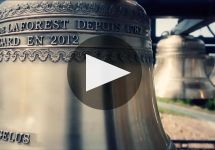Chateau Angelus 2018
-
Robert
Parker -
Jeb
Dunnuck -
James
Suckling -
Wine
Spectator - Decanter
-
Wine
Enthusiast



Product Details
Your Rating
Somm Note
Winemaker Notes
Magnificient freshness in the Merlot, a selection of very old Cabernet Franc planted on clay-limestone soils and gentle extraction during vinification have combined to make this vintage a very great Chateau Angelus. A lovely depth of color attracts the eye. Perfect aromatic purity (the fruit of precision work on a daily basis), together with notes of black fruit give great charm on the nose. On the palate, a sweet note gives way to elegant tension with refined, velvety tannins. The alcohol (below that of 2010) and the oak are perfectly integrated. The finish is lingering, underpinned by the elegance of the Cabernet Franc, by the purity of the fruit, and accompanied by delicate spicy notes.
Blend: 65% Merlot, 35% Cabernet Franc
Professional Ratings
-
Robert Parker's Wine Advocate
“This year we have slightly less Cabernet Franc in the blend because we are only using the oldest vines, planted by my grandfather, as a tribute,” Stéphanie de Boüard-Rivoal said. “These are 60- to 80-year-old Cabernet Franc vines.” From 2018, 10% of the entire Angélus crop will be aged in large oak foudres. “These produce tighter, more perfumed, brighter wines from less oxygen exposure,” Stéphanie commented. The 2018 Angélus is blended of 65% Merlot and 35% Cabernet Franc, to be aged 18-22 months in barriques, 100% new, plus two new foudres. Deep garnet-purple in color, it slips slowly, sensuously out of the glass with beautiful black raspberries, kirsch, warm plums and red roses scents, building in intensity to reveal chocolate-covered cherries, raspberry coulis, black tea, woodsmoke and powdered cinnamon notions with a waft of black olives and charcuterie. Medium to full-bodied, the palate delivers a wonderfully profound, multilayered, seamless experience of red and black fruits intertwined with earth, spice and floral notions and framed by exquisitely ripe, satiny tannins, finishing with amazing freshness and length. Incredibly, finely, expertly, seamlessly knit. Stunning.
Barrel Sample: 97-100 -
Jeb Dunnuck
I loved the 2018 Château Angélus from barrel last year and it blew me away from bottle, epitomizing the new, fresher, more elegant style of the estate while still bringing classic Angélus richness and power. The 2018 is a blend of 65% Merlot and 35% Cabernet Franc that was brought up in new oak, with a portion of the Cabernet Franc in foudre. A vivid purple color is followed by a vibrant bouquet of blackberries, crème de cassis, crushed violets, spring flowers, and cedar pencil. Beautifully concentrated, full-bodied, and flawlessly balanced on the palate, it has gorgeous tannins, remarkable purity of fruit, and awesome length. I followed this bottle for multiple days and it only improved, picking up additional depth and richness, while never showing a hint of oxidation. Pure perfection, it's going to benefit from 7-8 years of bottle age and keep for 3-4 decades. This is a sensational, magical wine from this talented team, led by winemaker Emmanuelle d'Aligny-Fulchi.
-
James Suckling
The aromas are incredibly complex with dark berries, elderberries, bay leaves, cloves and tile, follow through to a full body with layers of creamy and lightly dusty tannins that deliver a lingering finish and great attention to detail. The flavors range from black fruit to earth and stones. It’s reserved and poised with great intensity and power, in a toned and formed mode. One for the cellar. Try after 2026.
-
Wine Spectator
Very gutsy in feel, with lots of tobacco leaf, loam and espresso notes swirling around a core of steeped black currant and warm fig fruit flavors. The muscular finish is a jumble right now, but there's ample acidity coiled within. A wine that clearly wants to stand out from the pack.
Barrel Sample: 95-98 -
Decanter
This is rich and complex from the very first nose, showing dense brambled fruit with real precision of expression. After a few minutes the aromatics explode, leaping out of the glass and giving an extra level of enjoyment to the wine. In the mouth, lovely vibrant tannins grip without any sense of urgency, joined by curls of woodsmoke and salt taffy through the finish. It's gorgeous and will make you smile with its mouthwatering finish.
Only the oldest Cabernet Francs, aged between 60 and 80 years, went into the grand vin in 2018, meaning a little less Cabernet Franc in the blend than usual. But these old vines, planted by Stephanie de Boüard's grandfather, are rich in flavour and give saline emphasis to the finish. It's the first year that they have worked entirely organically, with a 32hl/ha yield from the harvest, which ran from 24 September to 11 October.
Barrel Sample: 98 Points -
Wine Enthusiast
This is a dense, smoky wine, packed with ripe tannins and a line of fresh acidity that forms a fine contrast. It's a great wine that is rich in tannins while keeping elegance and finesse. Barrel Sample: 96-98
Other Vintages
2024-
James
Suckling - Vinous
-
Robert
Parker
-
James
Suckling - Decanter
- Vinous
-
Jeb
Dunnuck -
Robert
Parker
-
James
Suckling -
Jeb
Dunnuck - Decanter
-
Robert
Parker - Vinous
- Decanter
-
Wine
Enthusiast -
James
Suckling -
Jeb
Dunnuck -
Robert
Parker
-
Wine
Enthusiast -
James
Suckling -
Jeb
Dunnuck - Decanter
-
Robert
Parker
-
James
Suckling -
Jeb
Dunnuck - Decanter
-
Robert
Parker
-
James
Suckling -
Jeb
Dunnuck -
Wine
Enthusiast - Decanter
-
Wine
Spectator -
Robert
Parker
-
Wine
Enthusiast -
James
Suckling -
Robert
Parker - Decanter
-
Jeb
Dunnuck -
Wine
Spectator
-
James
Suckling -
Robert
Parker -
Jeb
Dunnuck -
Wine
Enthusiast -
Wine
Spectator - Decanter
-
Wine
Enthusiast -
James
Suckling -
Wine
Spectator - Decanter
-
Robert
Parker - Vinous
-
Wine
Enthusiast -
Wine
Spectator -
Robert
Parker -
James
Suckling
-
James
Suckling -
Robert
Parker -
Jeb
Dunnuck -
Wine
Enthusiast -
Wine
Spectator
-
James
Suckling -
Robert
Parker -
Wine
Spectator -
Wine
Enthusiast
-
Robert
Parker -
Wine
Spectator -
James
Suckling -
Wine
Enthusiast
-
Wine
Enthusiast -
Robert
Parker -
Connoisseurs'
Guide -
Wine
Spectator
-
Robert
Parker -
Wine
Spectator -
Wine &
Spirits -
Connoisseurs'
Guide
-
Jeb
Dunnuck -
Robert
Parker -
Wine
Spectator -
Wine &
Spirits -
Connoisseurs'
Guide
-
Wine &
Spirits -
Robert
Parker -
Wine
Spectator
-
Robert
Parker
- Decanter
-
Robert
Parker
-
Robert
Parker -
Jeb
Dunnuck -
Wine
Spectator
-
Robert
Parker
-
Robert
Parker -
Wine &
Spirits -
Wine
Spectator
-
Robert
Parker
-
Robert
Parker -
Wine
Spectator
-
Robert
Parker -
Wine
Spectator
-
Wine
Spectator
-
Robert
Parker
-
Robert
Parker -
Wine
Spectator
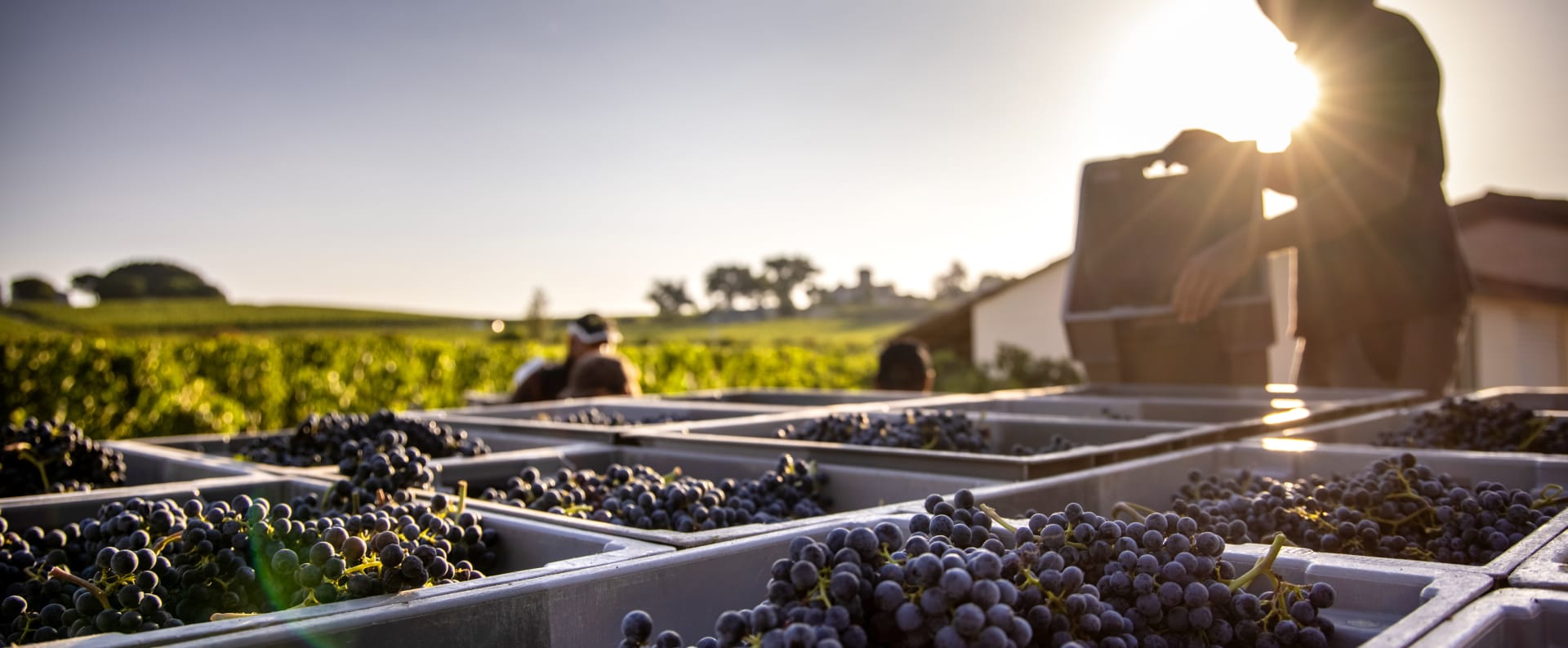


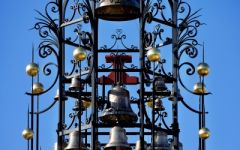
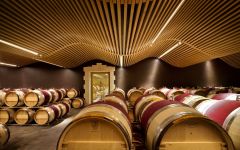

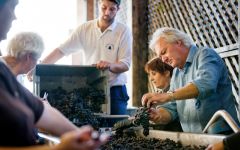
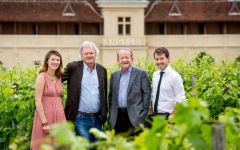

At the origin of Angelus is an exceptionally well-situated vineyard, at the gates to the village of Saint-Émilion, on the famous south-facing "foot of the slope". Since 1782, over the generations, the passion and determination of the de Boüard de Laforest family have built a destiny worthy of the Estate. At 131 hectares including 62 hectares in Saint-Émilion, of which 31 hectares from the historic heart of the Estate, Angelus is now one of the largest vineyards in the appellation. In 2012, after more than thirty years at the helm of Angelus, Hubert de Boüard de Laforest passed the baton to his daughter, Stéphanie de Boüard-Rivoal. She became the third woman in the family's nearly 250-year history to preside over the destiny of this emblematic Estate, ensuring its legacy continues to thrive. Today, Angelus employs 170 people, produces 8 cuvées and owns restaurants and hotels, in particular, the Logis de la Cadène in Saint-Émilion and Le Gabriel in Bordeaux. In 2023, diversification continued with the creation of La Ferme 1544, forming a link between Château Angelus wine business and its restaurants.

One of the world’s most classic and popular styles of red wine, Bordeaux-inspired blends have spread from their homeland in France to nearly every corner of the New World. Typically based on either Cabernet Sauvignon or Merlot and supported by Cabernet Franc, Malbec and Petit Verdot, the best of these are densely hued, fragrant, full of fruit and boast a structure that begs for cellar time. Somm Secret—Blends from Bordeaux are generally earthier compared to those from the New World, which tend to be fruit-dominant.

Marked by its historic fortified village—perhaps the prettiest in all of Bordeaux, the St-Émilion appellation, along with its neighboring village of Pomerol, are leaders in quality on the Right Bank of Bordeaux. These Merlot-dominant red wines (complemented by various amounts of Cabernet Franc and/or Cabernet Sauvignon) remain some of the most admired and collected wines of the world.
St-Émilion has the longest history in wine production in Bordeaux—longer than the Left Bank—dating back to an 8th century monk named Saint Émilion who became a hermit in one of the many limestone caves scattered throughout the area.
Today St-Émilion is made up of hundreds of independent farmers dedicated to the same thing: growing Merlot and Cabernet Franc (and tiny amounts of Cabernet Sauvignon). While always roughly the same blend, the wines of St-Émilion vary considerably depending on the soil upon which they are grown—and the soils do vary considerably throughout the region.
The chateaux with the highest classification (Premier Grand Cru Classés) are on gravel-rich soils or steep, clay-limestone hillsides. There are only four given the highest rank, called Premier Grand Cru Classés A (Chateau Cheval Blanc, Ausone, Angélus, Pavie) and 14 are Premier Grand Cru Classés B. Much of the rest of the vineyards in the appellation are on flatter land where the soils are a mix of gravel, sand and alluvial matter.
Great wines from St-Émilion will be deep in color, and might have characteristics of blackberry liqueur, black raspberry, licorice, chocolate, grilled meat, earth or truffles. They will be bold, layered and lush.
